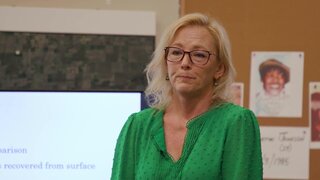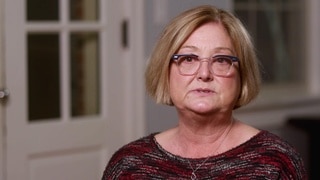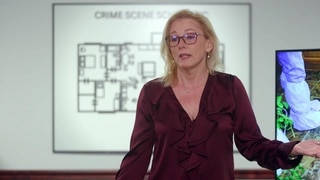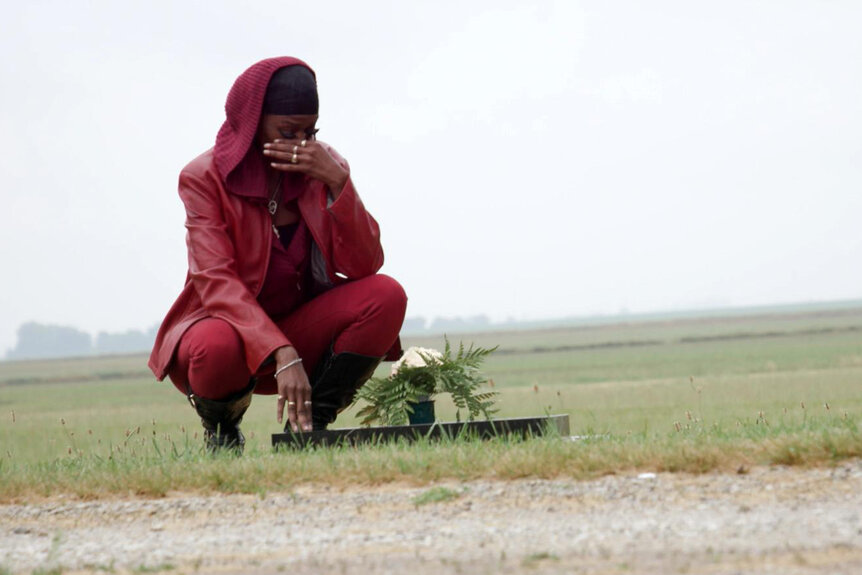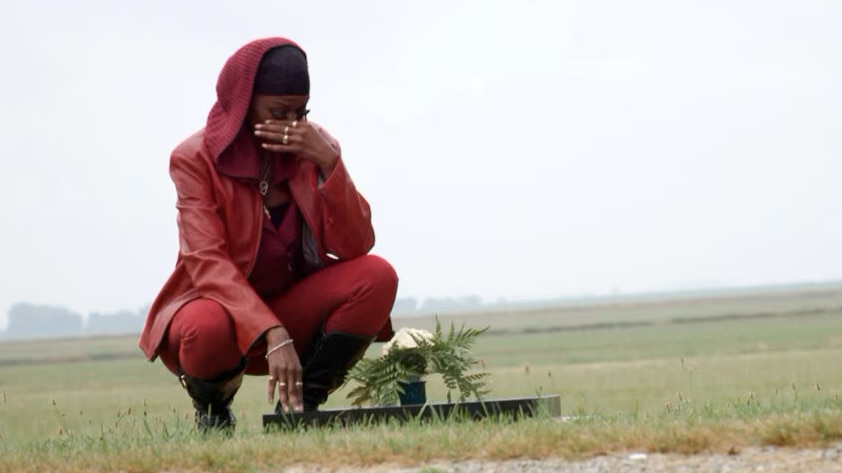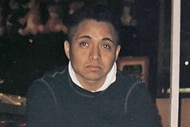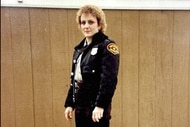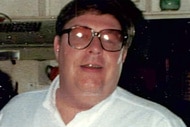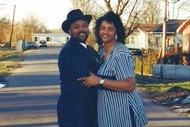Create a free profile to get unlimited access to exclusive videos, breaking news, sweepstakes, and more!
Kankakee Woman Stops at Nothing to Solve Mother’s 1985 Murder Decades After Positive ID
The 11-year-old daughter of Jannette Johnson witnessed her mother park near their home after returning from a party. Johnson never made it inside, and it would take decades for authorities to identify her body.
An 11-year-old child missed her mother’s killer by only moments during a time she was supposed to be asleep. Now, 38 years later, Joretha Hampton hopes her mother’s 1985 homicide may finally be solved with the help of Cold Justice.
“This was my world; she was my world,” a tearful Hampton said of her 29-year-old mother, Jannette “Jette” Johnson, on Cold Justice, airing Saturdays at 8/7c on Oxygen. “She lit up any room. She brought so much love.”
Could Kelly Siegler and her team help the Kankakee Police Department get closer to the truth, and could they build enough of a case to present it for local prosecutors?
Don't miss the latest in true crime:
Man Convicted in 25-Year-Old Idaho Woman's Brutal Murder in Case Cold Justice Assisted On
DNA Aids Investigators in Examining 1982 Double Murder of Texas Mother, Young Daughter
Investigators Close In on Person Responsible for Sledgehammer Death of WWII Veteran
Jannette Johnson's Last Sighting
On the night of August 2, 1985, Jannette Johnson attended a birthday celebration at the Party House Bar in Kankakee, Illinois — about an hour’s car ride south of Chicago. Her sister agreed to watch Johnson’s 11-year-old daughter Hampton, and a couple of Hampton’s cousins.
Hampton’s aunt sent the children to bed, but they disobeyed, getting up when they heard Johnson return home between 2:30 a.m. and 3:00 a.m. Hampton raced to her mother’s bed and pretended to sleep, though she eventually fell asleep and didn't wake till the following day.
She last heard her mother’s keys at the front door, though Johnson never made it inside the house.
“I miss her hugs,” Hampton shared. “I miss her telling us how she loved us.”
Months later, on November 24, 1985, deer hunters stumbled upon Johnson’s skeletal remains in a rural part of Kankakee County. However, it would take decades to make an identification, and in November 2020, DNA proved the body positively belonged to Johnson, according to Kankakee Police Department (K.P.D.) Detective Sergeant Logan Andersen.
“She’s been dealing with this for approximately 38 years,” said Andersen of Hampton. “I just want closure, not only for her but for her family and her friends.”
Det. Sgt. Andersen took on Johnson’s case after Hampton appealed to the public via social media, stating law enforcement hadn’t taken the case seriously. Andersen and Siegler, with the help of homicide investigator Steve Spingola and K.P.D.’s Todd Koerner, wanted to get to the bottom of who possibly killed Jannette Johnson.
The Evidence
Hampton recalled that in the hours leading up to her mother’s disappearance, Johnson’s on-again, off-again boyfriend of three years, Lionel Thomas, visited the home three times while Johnson was at the party. Thomas reportedly inquired about when Johnson would return, her daughter said. This happened less than an hour between Thomas’s third and final visit and when the kids heard Johnson return home.
Hampton and the other children peeked outside the window and watched Johnson park her car in the side alley, which was typical for the mother of two. However, the following day, the vehicle was parked in front of the house, which seemed odd. Additionally, Johnson’s wallet was left on the passenger’s seat, and a cigarette had been left to burn in the car’s ashtray, leaving a long column of ash. The keys had also been left in the ignition.
“The fact that Jannette’s car was parked in a different spot the next morning when everybody woke up suggests that somebody brought the car back after she was probably killed and disposed of,” Kelly Siegler told Cold Justice. “But who would do that, and why would they do that?”
Johnson’s skeletal remains were found partially scattered and partially buried in a shallow grave in a countryside clearing.
A 1989 jury’s inquest, plus Cold Justice bringing in the help of Forensic Pathologist Kathryn Pinneri, concluded Johnson likely sustained a gunshot wound to the head. It remained unclear, however, if the purported gunshot was the cause of death, and the manner of death was concluded to be a homicide.
Neither the bullet nor the casing was ever recovered.
“With Jannette’s car having moved from where Joretha saw it the night before, it’s safe to assume that Jannette rode in it with her attacker to that field where her body was found,” said Siegler. “The question is, did she get forced at gunpoint at her front doorstep and complied to protect her kids inside the house, or was she lured away by someone she knew?”
It didn’t seem plausible to the team that a random assailant would return the victim’s car to the residence.
RELATED: The Disturbing Murders Behind Buried Bodies Dug Up from Las Vegas Deserts
A Look Into Lionel Thomas
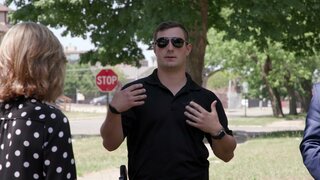
Lionel Thomas was a local photographer who lived about five to six blocks from the victim’s home.
Hampton’s late grandmother wouldn’t allow Hampton to see Thomas, but after Hampton turned 18, she formed a relationship with her mother’s old boyfriend. According to Hampton, Thomas became something of a father figure.
Hampton told Siegler, “I allowed myself to get so caught up in this man, I lost focus, and I just accepted him still in my life.”
Hampton wondered — if Thomas has something to do with Johnson’s murder — “Why did you take her from us, and why did you keep me as a souvenir all these years?”
Looking back at Thomas and Johnson’s relationship, investigators examined a series of letters Thomas had written to Johnson. As gleaned from the writings and witnesses, the couple had plans to attend a Chaka Khan concert just one day after Johnson disappeared.
But perhaps even more significant, it appeared Thomas might have grown jealous after Johnson broke things off for the last time.
Investigators agreed the writings suggested “borderline stalking" took place, and at one point, Thomas called Johnson “an evil woman with a cold heart” after she wanted to put an end to their romance.
Thomas’s Alleged 2021 Comments
Siegler and the team revisited many witnesses from the night Johnson went to The Party House, including friends Charleen Sessions, Patricia Prude, and Roderick Sessions. They also spoke with people Hampton was with that night, including Johnson’s sister and babysitter, Jane Lynette Evans, who’d fallen asleep on the couch when Johnson reportedly made it to the front door.
Some said Thomas randomly showed up wherever Johnson was, while Johnson’s cousin, Esteen Hill, called Thomas “creepy” and “weird.”
Still, nothing directly tied Thomas to Johnson’s murder.
In 2021, Det. Sgt. Andersen asked for the public’s help after orchestrating a search in the area where hunters discovered Johnson’s body.
“The actual reason for that search was to see if any of the people that the police department identified as suspects would show up and what their reactions would be to that search,” said Investigator Spingola.
Gia Wright of the Missing Persons Awareness Network told investigators Thomas arrived and walked with her. According to Wright, Thomas said he’d been in the area “many times,” including when photographing weddings as part of his job.
According to Spingola, it wouldn’t be uncommon for a killer to hide bodies within their “comfort zone.”
The Cold Justice team confronts their prime suspect
The team had experts conduct a new DNA analysis from underneath Johnson’s fingernails, but alas, nothing was discovered. They hoped that visiting Thomas face-to-face would help them get closer to closing the case.
“This case basically rests on what Lionel [Thomas] is gonna tell us; we don’t have enough to indict him right now or charge him with a crime, let’s face it,” said Spingola. “A lot of evidence here points to him, but it doesn’t exactly eliminate other suspects.”
At the time of Johnson’s disappearance, Thomas said he saw a light blue car pull up to Johnson’s home, but he soon lost sight of the vehicle. The statement matched other reports by friends who followed up with leads in Chicago and stated that someone driving a blue Ford Grenada kept circling the block and watching them.
Det. Sgt. Andersen and Spingola invited Thomas to speak with them in their vehicle while Siegler and Koerner listened in on the interview from another location. Thomas said Johnson was his “first love.”
“She just didn’t want to be involved with me at that time,” Thomas admitted.
Thomas made several contradicting statements, but it was important for investigators to bear in mind that the case was 38 years old, and much of what they had was based on the witness statements of young children.
During the interview, Thomas said he was with Johnson at the party earlier in the evening but left early, though no one else could corroborate the detail. He also said he visited Johnson’s home only once, as opposed to the three times reported by Joretha Hampton.
Thomas agreed he walked from his home to Johnson’s but later said he was standing by his car when he saw the blue one pull up.
Before being confronted by the statements made by Gia Wright during the 2021 field search, Thomas denied being in the area more than once, contradicting Wright’s statements to police.
“I had no reason to be angry,” Thomas said of his relationship with Johnson. “She was loved by everybody that I know, so I have no idea why this happened.”
Is there enough to charge Lionel Thomas?
Investigators looked back at the evidence, including Johnson’s parked car, Thomas’ letters to Johnson, and Johnson’s contradicting statements to authorities.
“Lionel’s whole story has basically small contradictions in it, but there’s no major shifts in his story, which is problematic from a prosecution standpoint,” said Spingola.
Ultimately, investigators agreed that the case against Lionel Thomas didn’t meet the threshold to bring the case before prosecutors. For now, Thomas would not be charged in connection with Jannette Johnson’s disappearance and homicide.
“It’s really hard in a case like this where you don’t have enough for probable cause or to try and get a D.A. to move forward,” said Siegler. “One day, something could come along to make this case a whole lot better. That’s what we all hope for.”
Still, while the team remained “frustrated,” Johnson’s daughter remained hopeful that the case would continue. She thanked law enforcement for reopening their investigation.
“We will not be having any arrests at this moment, that’s OK,” said Joretha Hampton. “My mother wouldn’t have gave up on us, so I couldn’t give up on her, but my journey here has stopped.”
Cold Justice airs on Saturdays at 8/7c on Oxygen.
